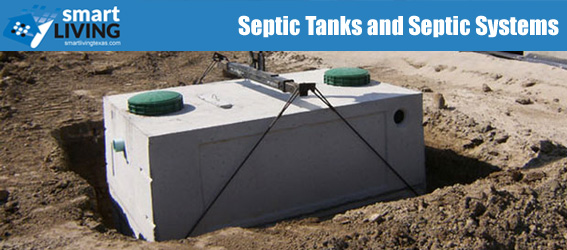Septic tanks are common with Texas homes in unincorporated areas and custom homes. They also are common in isolated homes or homes situated on larger parcels of land. For the most part, homes that are located in urban to suburban areas are built with a waste water system already in place. The City or the utility districts in these areas handle the supply of water and disposal of waste water. Areas that are not quite as developed, or homes that were built prior to a governing water system must rely on septic tanks.
Pro’s and Con’s of a Septic Tanks
There are some advantages and disadvantages to these systems. You do not have to subscribe to the city or utility district for water and waste water with a septic system. This is obviously an advantage in monthly savings. Additionally, with a septic tank the overall property tax are frequently lower, even substantially lower in some cases. However, the maintenance of these systems are now reliant on the homeowner. Depending on the size of the septic, the tank may need to be pumped every 1 to 3 years. Tanks have the capacity to last up to 30 years, but that all depends on the material the septic tank is made of, and the amount of proper maintenance it has received.
Maintenance
It’s recommended that you have the unit inspected annually to ensure its proper function. Faulty septic systems can potentially cause a great deal of harm to the surrounding ecosystem and water. Unfortunately, for those who are looking to purchase a resale home, there is no freedom to choose. Depending on where you are looking for a home, you either have it, or you don’t. If the home does have a septic system, a thorough inspection is necessary prior to closing. If you have any questions, ask your real estate agent to point you in the right direction.






You mentioned in the blog that when you use a septic tank system, you can be pretty much independent and don’t have to use the city’s waste system. My father has always highly valued being self sufficient and independent, so this sounds like the perfect match for him. I’ll be sure to help him look for a contractor that could help install one on his property.
My husband and I recently moved into a home that has a septic system. We want to make sure that we do everything possible to properly maintain it. Like you said, it is recommended that the system is inspected annually to ensure proper function. We’ll be sure to do that.
It’s interesting to learn that when it comes to getting a septic tank that there are a lot of benefits that can from it. I like how there is monthly savings that can come from doing this. It will be nice to be able to get things taken care of without having to worry about what it will do to our budget.